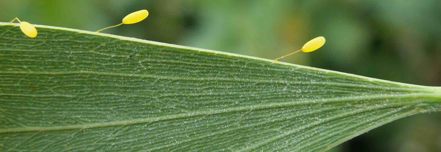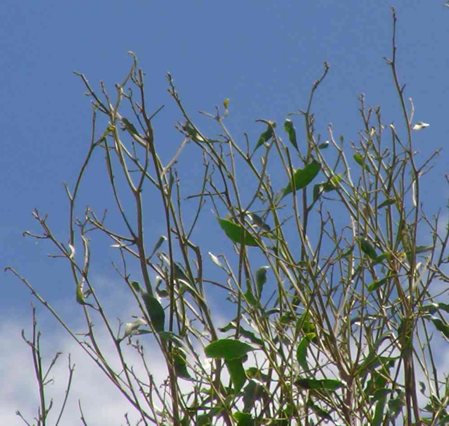PESTS AND DISEASES OF FORESTRY IN NEW ZEALAND
Dicranosterna semipunctata - where is it these days?
Scion is the leading provider of forest-related knowledge in New Zealand
Formerly known as the Forest Research Institute, Scion has been a leader in research relating to forest health for over 50 years. The Rotorua-based Crown Research Institute continues to provide science that will protect all forests from damage caused by insect pests, pathogens and weeds. The information presented below arises from these research activities.
From Forest Health News 201, December 2009.

Dicranosterna semipunctata, the blackwood tortoise beetle, is an Australian species that was first found in New Zealand at Remuera, Auckland in April 1996 on Acacia melanoxylon (blackwood). By the end of that year it had been found at Whitford and in 2001 it was found in the Waikato for the first time. By 2002 it had spread to the Coromandel and the Bay of Plenty and in 2003 it was found in Northland. Currently the most southerly record is from Kinleith in the Taupo region; it was found there in 2008.

In Australia D. semipunctata is found in Victoria and New South Wales and its usual hosts are large phyllode Acacia spp. In New Zealand it is usually found on Acacia melanoxylon but it has also been recorded from A. koa and A. implexa.
Dicranosterna semipunctata can cause moderate to severe defoliation of Acacia melanoxylon and in 1999 a Scion (then Forest Research) entomologist investigated parasitoids in northern New South Wales (see FH News 105, March 2001). Two species, Enoggera polita and Neopolycystus sp. (Pteromalidae), were found parasitizing D. semipunctata eggs. Between 33-60% of the eggs were parasitized and this gave consideration to them being introduced to New Zealand as biological control agents. However, this was not followed up, mainly because of lack of funding.
Stephanie Sopow
This information is intended for general interest only. It is not intended to be a substitute for specific specialist advice on any matter and should not be relied on for that purpose. Scion will not be liable for any direct, indirect, incidental, special, consequential or exemplary damages, loss of profits, or any other intangible losses that result from using the information provided on this site.
(Scion is the trading name of the New Zealand Forest Research Institute Limited.)



